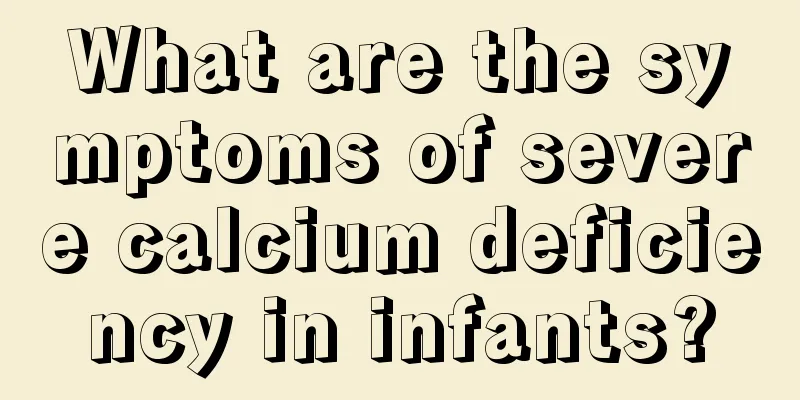Six-year-old child has pain around belly button

|
As children grow up, parents all hope that they can be healthy, but they often encounter various problems in the process of growing up, abdominal pain being the most typical one. In daily life, some children's abdominal pain is mainly concentrated around the belly button. As parents, we definitely want to know the specific reasons. So, what is the cause of pain around the belly button in a six-year-old child? Let’s take a look below. The most common causes of periumbilical pain in children include lead poisoning, mesenteric lymphadenitis, intestinal parasites, and other conditions. It is recommended that you give your child relevant examinations to rule out these conditions. First, it is recommended that you give your child an abdominal color Doppler ultrasound to rule out mesenteric lymphadenitis. Mesenteric lymphadenitis is usually complicated by upper respiratory tract infection or intestinal infection. It is generally characterized by intermittent periumbilical pain. Some may have diarrhea. Color Doppler ultrasound can confirm the diagnosis. Specific treatment can only be determined after the infectious pathogen is identified based on a routine blood test. If your child has recurrent or frequent abdominal pain around the umbilicus, you'd better check your child to see if the blood lead level is high, and also check for intestinal parasitic infection, and then give appropriate treatment. Clinical manifestations of lead poisoning in children 1. Common symptoms There are abdominal pain, diarrhea, vomiting, black stools, headache, dizziness, insomnia, palpitations, pale complexion, anemia, vasospasm, liver and kidney damage, and even irritability and coma. 2. Acute lead poisoning There is a metallic taste in the mouth, drooling, nausea, and vomitus that is often white milky (lead forms white lead chloride in the stomach). There are also abdominal pain, sweating, irritability, refusal to eat, decreased sensation in the extremities, and lead paralysis. When lead poisoning encephalopathy occurs, severe headache and persistent vomiting suddenly occur, accompanied by increased breathing and pulse, ataxia, strabismus, convulsions, coma, etc. At this time, there may be increased blood pressure and optic disc edema. 3. Chronic lead poisoning It is more common in children aged 2 to 12 years old. It usually takes 3 to 6 months from ingestion to the onset of symptoms. It affects the child's psychology, behavior and immunity. Clinically, dizziness and general weakness are the most obvious. Poor appetite, abdominal pain, diarrhea, constipation, susceptibility to colds, short stature, hyperactivity, bad temper, aggressive behavior, inattention, poor academic performance, excessive movement, delayed language development, black lead lines on the edges of the gums, gray face (lead color), anemia, etc. Severe cases may have epileptic seizures, blindness and hemiplegia. These symptoms gradually decrease with age, but intellectual disability persists. 4. Acute lead poisoning encephalopathy Sudden persistent vomiting (may be projectile) may occur, accompanied by increased breathing and pulse, ataxia, strabismus, convulsions, coma, etc. At this time, there may be increased blood pressure and optic disc edema. 5. Severe lead poisoning There are often paroxysmal abdominal colic, and hepatomegaly, jaundice, oliguria or anuria, circulatory failure, etc. may occur. A few have gastrointestinal bleeding and paralytic intestinal obstruction. Patients with a longer illness period also have anemia, a gray face (lead face), accompanied by palpitations, shortness of breath, fatigue, etc. Their teeth and nails are stained black due to lead deposition. The black "lead line" on the gums is rarely seen in young children. Sometimes limb paralysis may be seen. If intercostal muscle paralysis occurs, breathing difficulties or even respiratory failure may occur. Mesenteric lymphadenitis Mesenteric lymphadenitis presents with abdominal pain, fever, and gastrointestinal symptoms, and can be easily confused with other surgical emergencies. Acute mesenteric lymphadenitis is more common in children under 7 years old, and is more common in winter and spring. It often occurs secondary to upper respiratory tract infection or intestinal inflammation. Have abdominal pain, fever, nausea, vomiting, diarrhea or constipation. The lesions often involve a group of lymph nodes at the end of the ileum, so abdominal pain occurs around the umbilicus or in the right lower abdomen, with a fixed tenderness point, but no rebound pain or abdominal muscle tension. However, small nodular, tender masses may occasionally be palpated in the right lower abdomen, which are enlarged mesenteric lymph nodes. There are no systemic symptoms of poisoning, and the white blood cell count is slightly elevated. It should be differentiated from acute appendicitis and no surgery is required. The condition can be relieved and cured after conservative treatment. |
<<: Children's tonsils suppuration and repeated fever
>>: What is the reason for the white spots on the child's fingernails?
Recommend
Early symptoms of rheumatic disease in children
Rheumatism is a very common disease in daily life...
Does a child's late speech have anything to do with IQ?
We all know that in life, many parents are partic...
Why does my baby always scratch his ears?
When a baby is feeling uncomfortable, there will ...
How to deal with yellow discharge from baby's ears?
The ears are the organ that allows us to hear, so...
Why does my child's neck swell when he talks?
Many clinical diseases have obvious symptoms and ...
There are 6 ways to diagnose polio
What are the diagnostic methods for polio? This h...
What are the educational methods for 2-year-old babies?
When a baby reaches the age of 2, he or she alrea...
Why do newborns yawn and not sleep?
Sleep is something we all need. For people of dif...
Why does a 5-year-old child have bad breath?
Children often suffer from some diseases that we ...
Why does a child cough when lying down?
If a child gets sick with a cold, he or she may h...
Why does my baby have a hoarse voice?
Many children often have some hoarse throats when...
Why is the little boy urinating blood?
Generally speaking, when a child has blood in his...
Why does my baby always stick out his tongue?
For babies, their physical development is most li...
Dietary supplements for children with anemia
Children often have symptoms of anemia. I'm s...
What is going on with a three and a half year old baby wetting the bed?
It is a common symptom for babies to wet the bed ...









